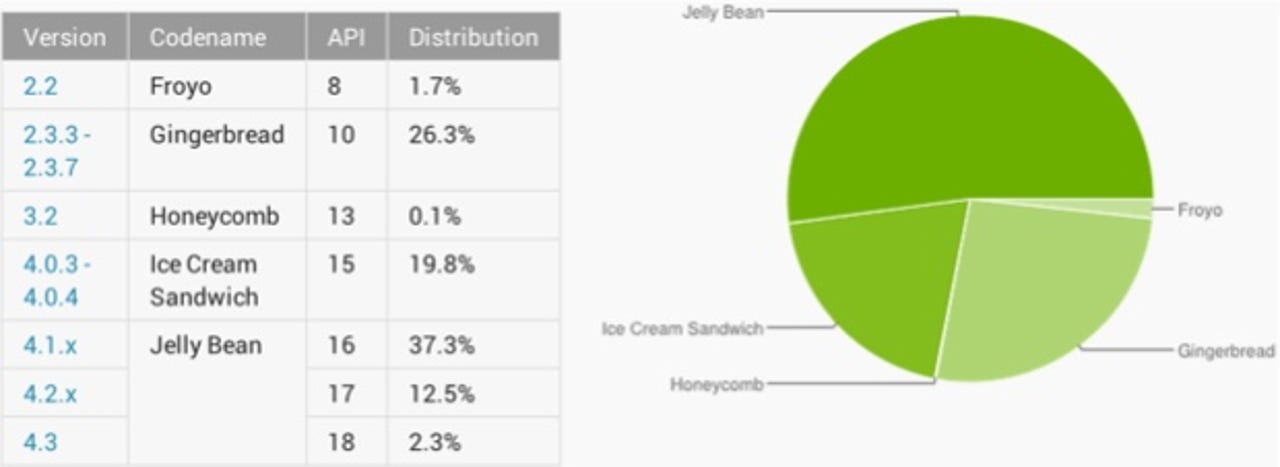Jelly Bean powering more than half of all Android devices

According to stats published by Google, the newest Jelly Bean release is powering over half of all Android devices accessing the Google Play store.
The data, which is based on smartphones and tablets accessing the Google Play store during a 7-day period ending on November 1, 2013, shows that versions 4.1.x, 4.2.x and 4.3 of Jelly Bean power 52.1 percent of all Android devices.

The newest release, Android 4.4 KitKat, doesn't appear in the listing since it and the new Nexus 5 smartphone wasn't unveiled until late last month.
AR + VR
Over the past four months, Jelly Bean's usage share has increased by over 14 percentage points to become the most widely used Android platform.
As far as versions older than Android 2.2, according to Google as of August 2013 they accounted for about one percent of devices that checked in to Google servers (not those that actually visited Google Play Store).
This might be good news for developers as it means they can focus their efforts onto the new operating system releases. However, Jelly Bean's nearest rival is Android 2.3.x Gingerbread, a version first released back in February 2011, and this version continues to power 26.3 percent of the devices accessing the Google Play store. However, the good news is that this version's dominance is eroding slowly as the months progress, but it is likely to remain significant for at least another year.
Another fragmentation issue to bear in mind here is that Google has decided to release three different versions of Jelly Bean, and the lion's share of usage is from 4.1.x (also known as API level 16), a version first released July 2012. This means that there's considerable fragmentation among devices running Jelly Bean, with the majority unable to benefit from features introduced in versions 4.2.x, 4.3, and now 4.4 as KitKat is rolled out to handsets.
The problem with getting users up to the latest version is not down to a lack of interest. Indeed, the speed and ferocity with which iOS users upgrade to the latest version shows that users clearly are interested in new versions of operating systems. The problem is that Google is the beginning of a long system that updates have to go through.
Whenever Google releases a new version of Android, device OEMs have to then customize the release, add their own tweaks and personalizations. Then, for smartphones and tablets that are hooked to a carrier contract, the carriers have to add their own branding. The problem is made worse by the fact that neither the OEMs of the carriers feel there's much of a benefit in pushing free software updates to customers, and would rather focus on selling owners a new device.
Beginning in April 2013, Google started delivering data collected from each device when the user visited the Google Play Store. Previously, the data was collected when the device simply checked in to Google servers. Google believes that the new data "more accurately reflects those users who are most engaged in the Android and Google Play ecosystem."
See also:
- New iPad mini: First look, in pictures (gallery)
- Apple's new Mac Pro revolutionizes the desktop workstation
- Top 10 Android phones (November 2013 edition)
- iPad Air vs. Kindle Fire HDX: Which is the best tablet?
- What's right (and wrong) with the Google Nexus 5
- iPad Air beats the iPad 4 by 80 percent in benchmark tests
- Inside the Surface Pro 2